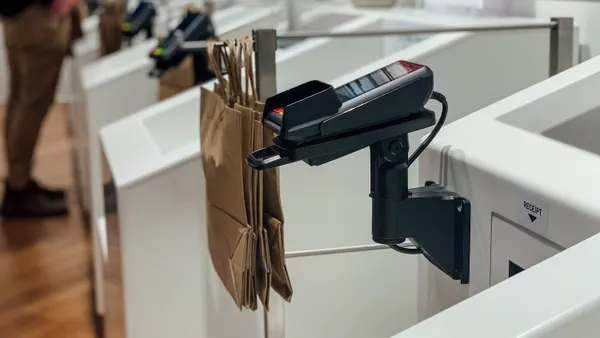Not that long ago, online grocery shopping was an exclusive playground for pioneers of the digital world.
Now, though, that playground is a lot more crowded.
Online shopping participation has accelerated at warp speed through the evolution of COVID-19. And it’s not just among the digital elite. More and more people are choosing alternative shopping options like home delivery, click-and-collect and curbside.
It’s become a time of change for retailers, many of whom are adjusting to meet the moment by offering choice. They’ve pivoting to offer online fulfillment options, which requires them to ensure the efficiency expected by third-party pickers. At the same time, they’ve had to adapt their in-store game to satisfy list-focused shoppers demanding safety and security. The common thread? Everyone wants to get in and out as quickly as possible.
As a result, the need to drive loyalty and build baskets through shopper engagement has never been more urgent.
Breaking through the mission-driven shopper’s focus
“Today’s shoppers are mission-driven,” says Trish Mielke, Sr. Manager, Holistic Captaincy with The Hershey Company. “They’re going in with a very focused intention. Accordingly, one of the biggest opportunities is getting them to go beyond the essentials by delighting them with cues that trigger latent needs.”
Many stores are refocusing front ends as a means of capturing unplanned needs at checkout. But what about the rest of the store? How do retailers break through the shopper’s mission focus?
There’s ample opportunity to provide what Mielke calls “delightful disruptions, especially for the digital shopper.
For instance, Hershey’s research shows that:
• 70% of those who order online said they make additional purchases instore when picking up
• 56% of those who pick up orders curbside enter the store at pickup
• And of the 56%, 87% make an additional purchase.
Given that, Mielke says retailers “must make sure the staging of all those operations are much more in sync. And that’s done with great intention from a square footage dedication, so people have clarity from signage on where to go for pickup, where to go for drive-in. And then it’s a matter of how that complements and enables a cohesive environment in-store and online to be shopped.
Even before that point of pickup, she says, “How do we ensure that the online order transaction for essentials complements the moments of discovery and browsing that can take place online and in-store? This intersection of online ordering and browsing instore can work in any retailer’s favor if they stage their footage really well.”
Understanding the shopper is imperative
The key, says Mielke, is knowing the shopper, understanding their path to purchase and engaging them at different moments throughout their journey. Doing so requires:
An immersive commitment. It can’t be put off or done half-way. Getting a clear picture of your shopper will unlock opportunity to deliver on a more cohesive experience, which may likely impact how the online/offline orders come to life, implying an evolution of store layout, labor allocation and messaging.
Listening and paying attention to how your shoppers are evolving, what their expectations are, and discovering ways to delight them with unplanned items that meet latent needs not making the list.
Data. Not just store-level and historical data, it’s about triangulating data online and offline and applying learnings from both experiences.
A partner who can interpret that data and provide the differentiating insights that spur growth and profitability.
How to create engagement
To create engagement, Gina Peterson, Sr. Manager of Category Management with The Hershey Company, suggests retailers begin by considering how the digital shelf translates to the physical store. Online, retailers have multiple points of interruption where they can offer a deal, or suggest a recipe or a related product. If, for instance, someone adds graham crackers to an online order, retailers can suggest chocolate bars and marshmallows to increase basket size.
In the physical world, this involves wayfaring and grouping items – having the s’mores ingredients or taco supplies displayed together. This meets an unplanned need, while again increasing basket size. Similarly, placing dessert displays in the prepared food section can interrupt dwell with the delight of finding a sweet solution.
By meeting latent needs, Mielke says, “The shopper begins to think you know them better than they know themselves.”
That degree of understanding is only realized through strategic partnerships with manufacturers. Says Peterson, “By forming relationships and gaining access to differential data, we are able to provide growth-enabling insights that always have the voice of the shopper as our guiding light.”










